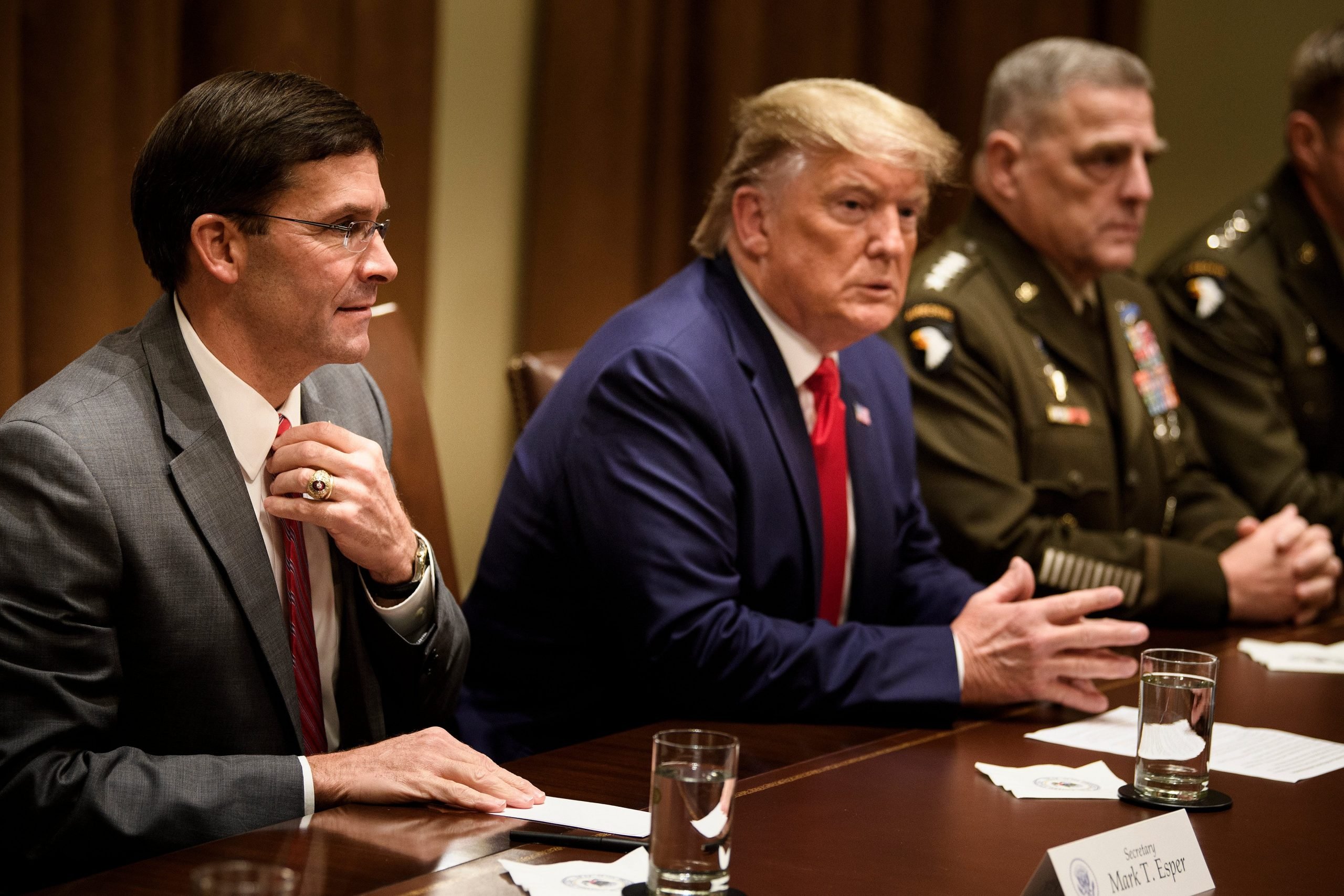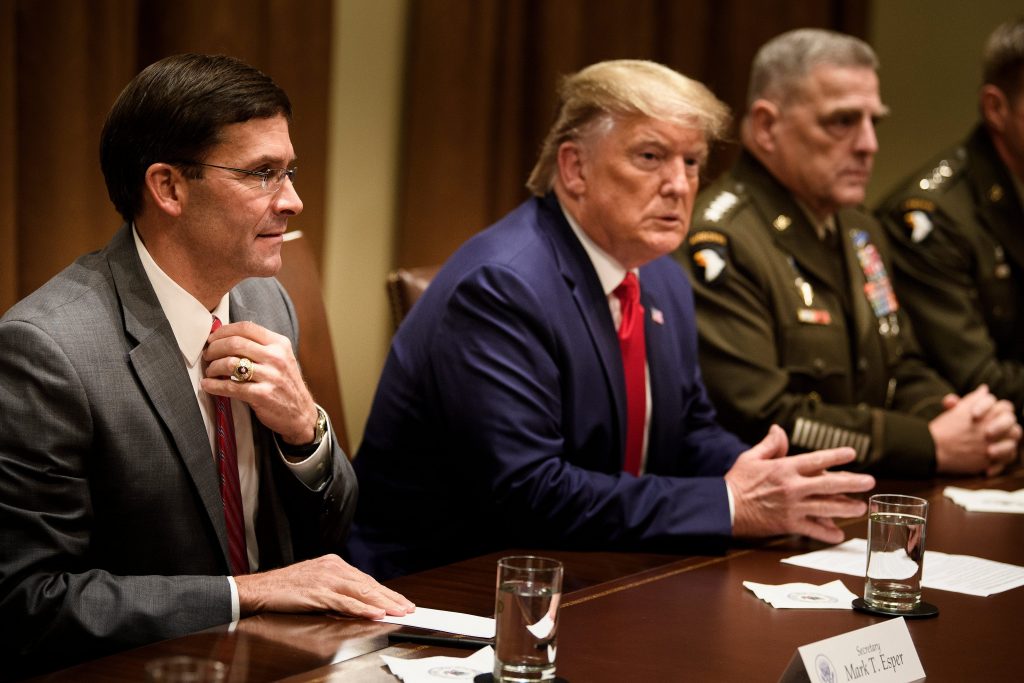
BRENDAN SMIALOWSKI/AFP via Getty Images
- Milley and Esper spoke against Trump using troops to blunt the Floyd protests, per a new book.
- Trump was intrigued with the idea of invoking the Insurrection Act, according to the book.
- During the early days of the protests, Trump was concerned that the US appeared out of control.
- See more stories on Insider's business page.
After George Floyd was killed while in the custody of Minneapolis police in May 2020, millions of Americans poured into the streets to protest his death and call attention to racial injustice.
In the immediate aftermath of Floyd's death, Trump summoned Gen. Mark Milley, Defense secretary Mark Esper, White House chief of staff Mark Meadows, and other advisors to find a way to end the protests.
The president was incensed by a New York Times report that he had been taken to a bunker as protests near the White House turned violent, thinking the news "made him appear scared and weak," according to a newly-released book by the Washington Post reporters Carol D. Leonnig and Philip Rucker.
To blunt the continued protests, Trump insisted that active-duty troops be used, which Milley, the Chairman of the Joint Chiefs of Staff, and Esper sought to eliminate as an option.
When Trump mentioned the 1960s race riots to justify the use of troops to restore order, Milley threw cold water on the suggestion, part of a longer discussion that resulted in the president cursing out his top military advisors, which Leonnig and Rucker detailed in "I Alone Can Fix It: Donald J. Trump's Catastrophic Final Year."
"Mr. President, it doesn't compare anywhere to the summer of sixty-eight," Milley said, according to the book. "It's not even close."
After senior advisor Stephen Miller chimed in to declare the protests as "an insurrection," Milley pointed to a portrait of former President Abraham Lincoln, who led the country through the American Civil War.
"Mr. President, that guy had an insurrection," Milley said, according to the book. "You don't have an insurrection. When guys show up in gray and start bombing Fort Sumter, you'll have an insurrection."
Trump entertained the idea of invoking the Insurrection Act, which would let him deploy troops across the country to quell any civil disorder or insurrection, but Milley and Esper continued to fight against the idea.
On June 1, Trump had grown angrier over the press coverage of the protests, urging governors and law enforcement to "dominate" the nationwide unrest.
"How do you think this looks to hostile countries?" Trump said, according to the book. "They see we can't even control our own capital city and the space around the White House!"
After once again calling for troops, Esper said that the National Guard remained the best option to stop any unrest, but the president proceeded to slam on the Resolute Desk and told the Defense secretary that he wasn't done enough to solve the problem, according to the book.
Trump sought to make Milley the leader of an operation to restore order, but after the general reiterated that he wasn't in an operational role, the president lost it.
"You're all f---ed up," Trump said, according to the book. "Every one of you is f---ed up."
Trump then looked at Vice President Mike Pence, who had been a quiet observer, and directed his ire toward his No. 2.
"Including you!" the president said, according to the book.
Later that day, Trump, along with Milley, Esper, and several other advisors, walked from the White House complex to nearby St. John's Episcopal Church.
The now-infamous photo op, which showed the president holding a bible in front of the church after protestors were violently cleared from Lafayette Park, immediately attracted criticism. However, the inspector general for the Interior Department determined in June 2021 that the US Park Police and Secret Service did not clear the park for Trump's photoshoot, but to install anti-scale fencing.
